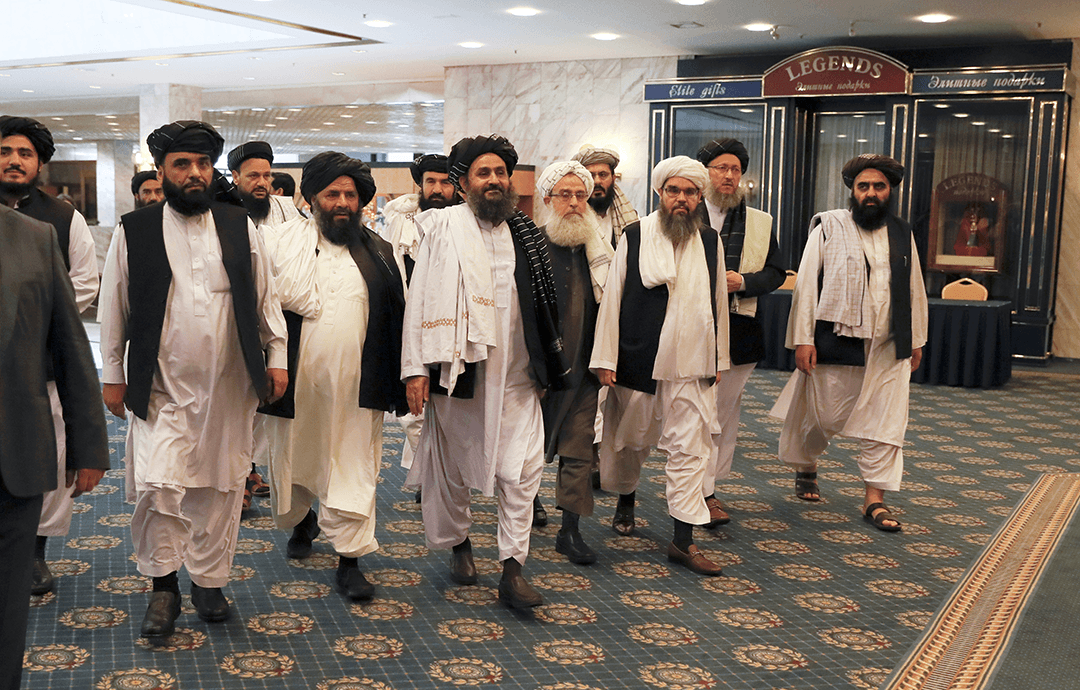
The Taliban gains paradoxically serve the strategic interests of America as follows: Looking from the broader perspective, the US has three challenges left in the region i.e. China, Iran and Pakistani nukes.
Jan Achakzai in The News International
IF there were a crystal ball to look into the next 18 months in Afghanistan, it would throw two scenarios: the positive outcome will likely be an intra-Afghan settlement pulled off involving major stakeholders including the Taliban. But the worst case is likely fanning out differently and this scenario more borders on an eventuality than a statistical probability – implosion of Afghanistan.
Like in Iraq, America’s ‘rush to the door’ in Afghanistan is an enabler for the creation of a combination of drivers for the Taliban to take over Afghanistan, and ironically without getting the blame for it: No intra-Afghan settlement, withdrawing support for Afghan Air Force for COIN and CT operations and hedging non-Taliban warlords like son of Ahmed Shah Massud by CIA. Whereas the Taliban are only taking over places where the US forces are moving out; by removing foot on the ground, America, it is clear, is allowing or managing the Taliban gains: Over the last month the Taliban have captured half of 35 districts of Afghanistan.
The Taliban gains paradoxically serve the strategic interests of America as follows: Looking from the broader perspective, the US has three challenges left in the region i.e. China, Iran and Pakistani nukes.
The Chinese challenge: America has decidedly designated China as a strategic adversary elevating its status from a competitor over the span of two consecutive US administrations almost replacing cooperation and with containment. Hence where best it can exploit the vulnerability of Beijing, it is in Afghanistan.
Example, the road to mainland China’s peace and stability goes through Xinjiang region and Xinjiang’s path to potential instability is paved with Afghanistan’s transition to an operational space for indirect proxy.
And here the Taliban as proxy actor fits the bill. To counter the Chinese challenge in terms of allowing Taliban to take over without getting credit of it, will serve the US strategic interests as follow:
The Taliban, even if their top leadership is not interested, will become a harbouring force of ETIM (East Turkestan Islamic Movement) of Xinjiang, China like they did in post 1995 – the Taliban need as much as possible fighters to counterbalance the rich potential warlords’ militias who were the beneficiary of the post 2001 political order and economic boom created by billions of US dollars pumped into Afghanistan. Interestingly, the US has white washed the ETIM as a terrorist group by delisting them in Nov 2020. Whereas for China, the ETIM is a terrorist outfit and as such an exhibition of double moral standard of the US i.e. good or bad terrorists, is unacceptable; coupled with the US decision to release the other 20 ETIM linked terrorists from Guantanamo Bay dubbed as Uygur ‘dissents’.
America will not take blame for this: Xinjiang focused militants join hands with Taliban rank and file – but with its two decades of presence in Afghanistan, the US will be better placed to steer it in order to make Xinjiang a battle ground – and that too without scapegoating for the proxy. The Taliban are religiously more inclined towards the ETIM narrative vs China and ideologically accept the ETIM’s buy-in of waging Jihad in Xinjiang, no matter what the diplomatic and politician-turn-Taliban top brass believe and advice.
Now another factor which will consolidate the ETIM as well is the advent of Turkey’s muscular diplomacy on the Afghan scene unfolding with Washington’s prodding: i.e. ruse of guarding the Airport and probably embassies.
Turkey is to ETIM what Pakistan was to the Taliban in the 1990s. For Turkey, ETIM is a leverage and has ethnic affinity with its nearly 400,000 Uighur population that led to diplomatic spars between China and Turkey in not a very distant past. ‘The muscle-flexing by Turkey means that new conflicts, wars and territorial claims are inevitable’, observed Nikola Mikovic in Asia Times. So expect strong push back from China.
The Taliban also serve another strategic goal of the US’s Iran challenge: The Taliban once consolidated in power, will likely get back to their predominant sectarian anti-Shia theology. They will be an asset and a handy leverage for the US against Iran – specifically in wake of Israel’s ex-PM Benjamin Natanyaho’s statement that ‘time has come to handle Iran kinetically’; the same strategy will be carried over by his predecessor.
Highly likely, there may be a false flag operation against Shia community in Afghanistan or Sunni community in Iran to cast Afghanistan-Iran standoff into sectarian lines which will force Tehran to scramble for using its own leverages to secure its equities in Afghanistan. As far as the US’s third strategic goal in the region, e.g Pakistan’s nukes is concerned, they are at the bottom of priority list of Washington for now.
It is clearly an unenvious task for policy makers to be strategic in the new geo-political game in the region and save Pakistan from impending challenges of the post-US-withdrawal Afghanistan.
Follow this link to join our WhatsApp group: Join Now
Be Part of Quality Journalism |
Quality journalism takes a lot of time, money and hard work to produce and despite all the hardships we still do it. Our reporters and editors are working overtime in Kashmir and beyond to cover what you care about, break big stories, and expose injustices that can change lives. Today more people are reading Kashmir Observer than ever, but only a handful are paying while advertising revenues are falling fast. |
| ACT NOW |
| MONTHLY | Rs 100 | |
| YEARLY | Rs 1000 | |
| LIFETIME | Rs 10000 | |













